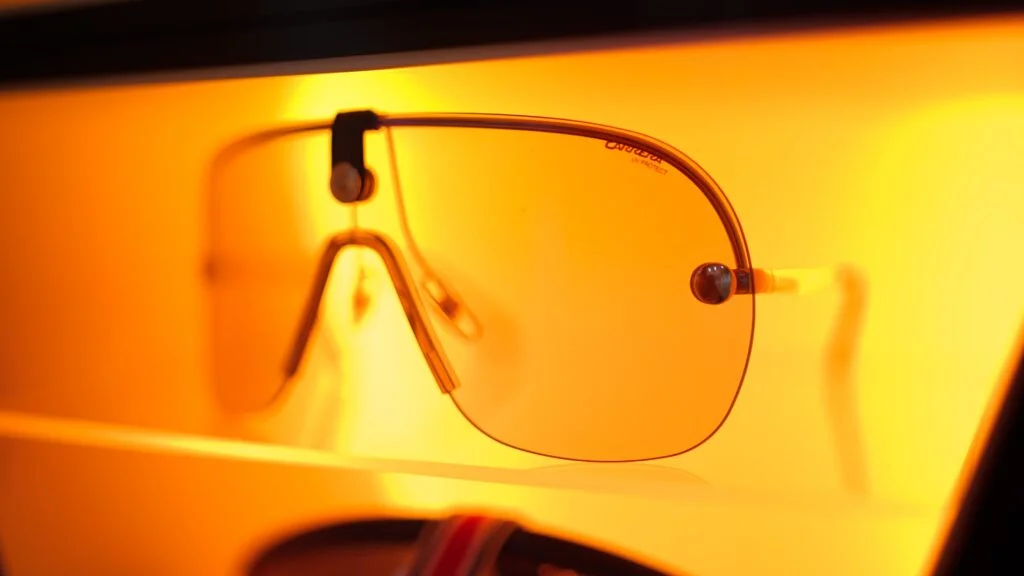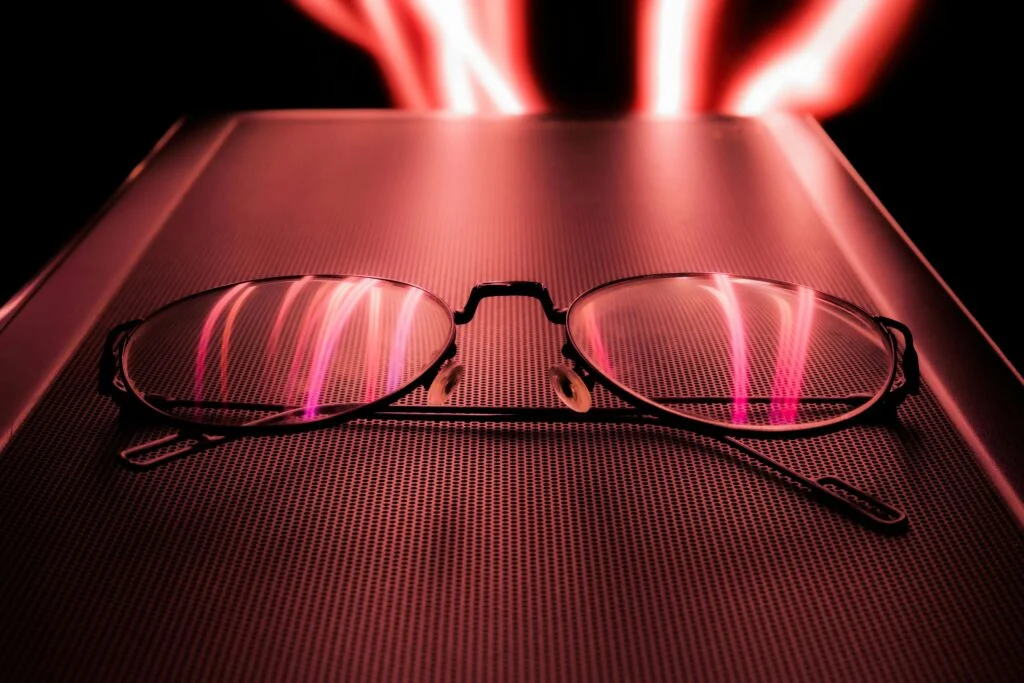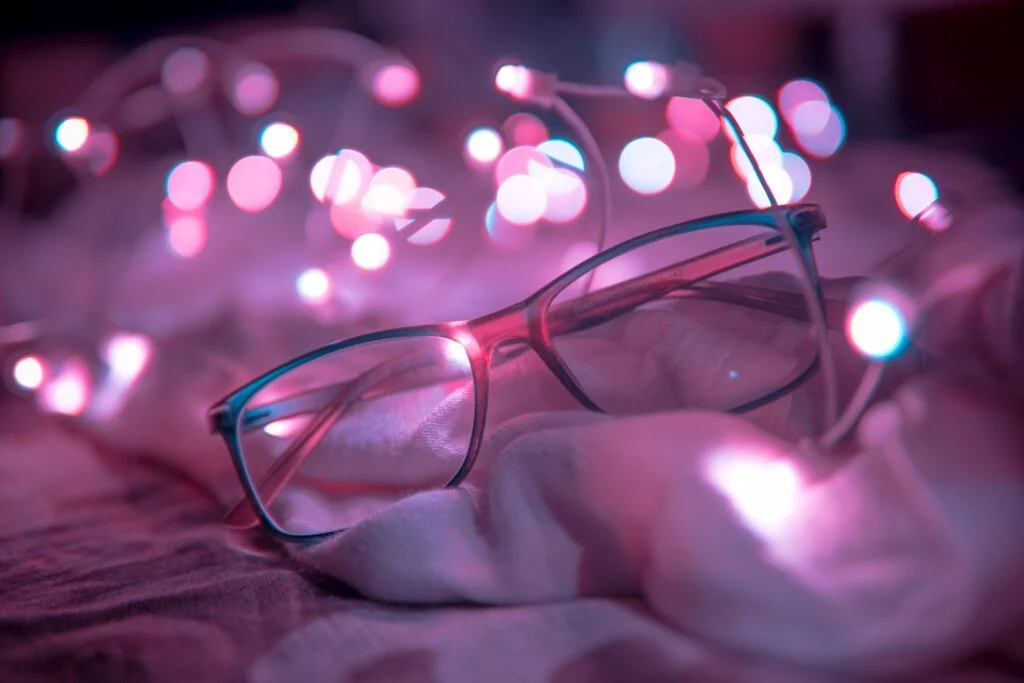
You will stumble upon different types of lenses while you’re scrolling to buy some new eyewear to improve your look and brighten up your mood, and trust me, it gets complicated, you’re straight away overwhelmed with so many types of lênses, every website suggests a different eyewear lens, you don’t even know which lens is best to choose and the overwhelming amount of information just demotivates you from purchasing, I have been through the same problem many times and I decided to start learning about eyewear myself to avoid such casualties, it’s too much work to buy glasses, I’m not complaining though, it’s nice to see our industry developing new types of eyewear lenses to make people’s lives better, but it’s a lot of important information that needs to be organized and be shown to us in a very simple and easy way to understand, I have decided to do that for you today, I’m not asking you to memorize all the info I’m going to share with you, but I advise you to use this article as a guideline everytime you make a decision to buy eyeglasses, it will make your eyewear shopping journey easier and more fun, and you will avoid many mistakes people do when buying glasses online, from the best eyewear lenses to every type of lens there exists in this world, I will explore it all today. Let’s hop in!
Different Prescription Lenses

It’s essential first to understand the different types of prescription lenses as your optician will recommend one of these lenses for your glasses, we have many types of eyeglass lenses and each one serves a specific and unique purpose.
Single-Vision Lenses
This is the most common form of prescription lenses, people prefer to wear single-lens glasses as multifocal glasses usually make them dizzy. Single-vision glasses are designed to solve one specific type of eye problem, nearsightedness (myopia), farsightedness (hyperopia), or ”astigmatism” (blurriness at all distances). You will likely get prescribed this type of lens by your optician.
Multifocal Lenses
Multifocal glasses are designed to solve two or more eye problems at once, some people experience both shortsightedness and farsightedness at the same time (or some other disease) and it’s a bit annoying to keep changing between two pairs of glasses every single time, multifocal lenses were invented to solve that problem and make it easy for people with many eye disorders.
Bifocal Lenses
Bifocals are mainly used for problems such as ”presbyopia” (difficulty of transitioning from far vision to near vision), they’re made of two lenses in one where the top of the lens is dedicated for farsightedness and the bottom of the lens is designed for short-sightedness, the two sides are divided by a visible line. Fun fact, they were invented by the founding father of the United States, Benjamin Franklin in 1784.
Trifocal Lenses
Trifocal glasses are very similar to bifocal glasses, instead of two zones they’re cut into three, the top is for farsightedness, the bottom for shortsightedness, and the middle is for intermediate vision (a balanced vision), the lines separating the zones are also visible. They’re prescribed for people with blurry vision at all distances.
Progressive Lenses
Progressive glasses blend the visible lines that bifocal and trifocal glasses show, you’re enjoying a smooth experience transitioning from far-sightedness to short-sightedness, they perfectly suit people who don’t like the visible lines embedded within bifocals and trifocals.
Anti-Fatigue Lenses
Anti-fatigue glasses are the most suitable option for people who work long hours, they help avoid eye strain when you’re using the computer, reading, or writing like I’m currently doing.
Prism Lenses
Prism glasses are specifically designed for people experiencing ”diplopia”, they correct the double vision caused by the disease and help you see only one clear image.
Spherical And Cylindrical Lenses
Spherical glass lenses (singlets) are used for correcting nearsightedness and farsightedness, they cause light to diverge or converge to help bring the retina’s surface to its focal point.
Cylindrical lens glasses are designed for correcting ”astigmatism” as they help focus the light directly on one line instead of many points.
Different Lens Materials

It’s also essential to choose the right lens material for your eyeglasses, five main lenses for glasses exist and each one of these materials suits a different goal. Another fun fact, most glasses are not made of glass, they’re made of plastic, ironic, I know.
CR-39 Lenses
CR-39 Plastic Lenses (Columbia Resin 39) are the most common form of lens material people use, they overwhelmed the existence of glass lenses and are widely used for their great capabilities, scratch-resistant, heat-resistant, and lightweight, they’re the most basic form of eyeglass lenses. Although they’re thick lens glasses which don’t suit some people.
Polycarbonate Lenses
Being known for their high durability, polycarbonate glasses are the best option for active adults and children, they’re impact-resistant lenses and they also protect your eyes from almost 100% of the sun’s ultraviolet rays, they’re also shatterproof as polycarbonate is used in making bulletproof glass! Polycarbonate lenses are the best lenses to use for your protective eyewear.
High-Index Lenses
High-index glasses are the perfect option for people with strong prescriptions, they’re lighter and thinner than most lenses and the lenses are less noticeable. They’re plastic lenses with a high refractive index (more efficient at correcting vision).
Trivex Lenses
Trivex glasses are a bit more expensive than your average lenses, but they do come with many benefits, they offer higher impact resistance and clarity than high-index lenses, they’re lightweight and very durable, they’re also scratch-resistant and are usually used for safety glasses and sports eyewear.
Glass Lenses
While plastic lenses have destroyed glass lenses, they’re still a good choice for people, they offer great clarity, are scratch-resistant, and offer very little distortion, one of the downsides of glass lenses is the lack of versatility which shows when compared to plastic lenses.
Different Types Of Lense Treatments & Coatings

Now that you have successfully chosen your prescription lens and the material that suits you the most, it’s also very important to choose treatments that will help protect your eyes from many exterior hindrances, this is different and unique for each type of person, if you’re someone who spends the whole day in front of your computer you might need blue light lenses, if you’re someone who spends a lot of time outside you probably need some high-quality UV resistant lenses, from red lens glasses to anti-fog lenses, there are many lens enhancements for glasses and we’ll check them out together now.
Scratch-Resistant Coating
For scratch-proof glass lenses, the following are coated with a special material called ‘lacquer’ which is a hard glossy material that enhances the lenses’ durability against scratches and all types of friction. Since plastic lenses are more susceptible to scratches due to rubbing and exterior factors, a scratch-resistant coating is necessary for your glasses.
Anti-reflective Coating
Anti-glare glasses are coated with a material (usually a Crizal lens) that minimizes glare and reflections, by doing so you’re minimizing the risk of eye strain and improving your eyesight, anti-glare lenses are perfect for people who drive at night when glare usually increases and driving is a bit harder. Sunglasses tend to have AR lenses to further protect your eyes.
Hydrophobic Coating
A superhydrophobic coating is great for people who live in rainy cities and find difficulties with water sticking to their glasses every time, it’s a coating that repels water, dirt, and other materials so that your beautiful lenses stay clear and their cleaning is super easy to do.
UV-blocking Coating
Prescription glasses usually block most of the sun’s ultraviolet rays, but adding a UV-block coating to your glasses will make sure you’re 100% protected from all of the sun’s harmful rays, UV lens glasses tend to be helpful for people who struggle with outside light and find it hard to practice daily activities without some kind of protection. If you buy sunglasses with high-quality lenses you will be getting the protection you need whilst looking good.
Blue-Light-Filtering Coating
Blue light lenses for glasses are by far the most popular treatment people add to their pairs and if you’re someone who uses the computer or the phone the whole day non-stop, then you probably need computer lenses for your glasses, the light emitted from our electronic gadgets is too harmful to our eyes, it causes eye strain, bad posture, and many other bad diseases, no matter who you are, it’s crucial to apply a blue coat lens to your pair so you can enjoy better sleep and a healthier lifestyle.
Light-Responsive Coating
A light-responsive treatment is great for people who want to save up money while enjoying a better lifestyle, it goes from normal clear prescription eyeglasses to dark grey, green, and brown colored lenses (100% UV rays protection) when exposed to the sun’s ultraviolet rays, and it saves you the cost of buying both prescription sunglasses and eyeglasses, two birds one stone.
Tinted Coating
Tinted lenses are also great for dimming the light outside and enjoying a peaceful and more relaxed state while you’re out, they protect your eyes from UV rays and are also fashionable, so you’re looking good while being healthier and better.
Polarized Coating
Polarized coating for glasses is placed in between the lens and is used to better block the light reflections coming from outside factors (water, windows, road), it substantially changes your view by acting as a filter and it does look good as well, it’s kinda like a real-life Instagram filter lol.
Flash mirrored Coating
Flash mirror lenses tend to block the outside light’s reflections whilst still showing your eyes to people, it’s a half mirror coating and it’s different than polarized, tinted, and anti-glare sunglasses, they’re a fashionable option and if you want to look good, that’s probably your best-pick.
Frequently Asked Questions

- How much do prescription lenses cost?
The average price of prescription lenses comes at an amount of $130, the cheapest prescription lenses are single-vision lenses, and the most expensive prescription lenses are progressive lenses which cost anything between $150 and $250.
- Can I get prescription lenses for my sunglasses?
You can get prescription lenses for your sunglasses so that you have clear eyesight and protect your eyes from the sun’s harmful UV rays.
- Protective eyewear should have which type of lenses?
Protective eyewear is advised to have polycarbonate lenses because they’re the most impact-resistant out of all the lenses in the market.
- Who makes the best eyewear lenses?
I would advise you to check out Essilor’s eyeglass lenses as they’re the highest quality available in the eyewear industry, they have the most premium lenses in the market.
- Can you buy glasses frames without lenses?
Of course, many websites offer frames without lenses to buy.
- Can you put new lenses in old frames?
Yes, you can always put new lenses in your favorite old frames, it’s possible.
- Can you put prescription lenses in any frames?
Indeed you can, as I have answered the question above you can fit any prescription lenses to your eyeglass frame. Make sure to contact your optical specialist to check if there are any kind of restrictions on your lenses as some lenses might not be compatible with certain frames.

Conclusion
Now that you have a guide for choosing the eyewear lens that suits your look and needs ideally, you can go on as many shopping journeys as you want, something as simple as eyeglasses contains a lot of complexity and information regarding its materials and how it’s made (some brands such as Randolph Engineering take 6 weeks and 200 steps to handcraft one pair of glasses), from frames to lenses to hinges to every other part of the pair, it gets so confusing and overwhelming, not to mention the abundance of styles and sizes of eyewear, it’s just too much, I have taken it as a mission of mine to explain everything about eyewear and make it really simple and easy to understand for you, you don’t have to keep searching and waste hours just to find the right sunglasses that suit you, all you have to do is check the blog for constant value and information that will just make your life easier, who doesn’t want that, I have also embarked on a mission to find the best underrated eyewear brands that you’re missing out on, and trust me, you’re missing out on a lot, plus, as a fellow coffee addict, isn’t it just lovely to have such a blog that opens up your mind and makes your coffee session just that more peaceful, you wouldn’t go wrong with a cup of nice brewd coffee and a ”Magic Eyewear” blog in the blissful morning, I know I won’t, and if you want to further expand your knowledge and know more about the different parts of glasses, then check out this article now about all the different eyeglasses frames. You don’t want to miss it!
